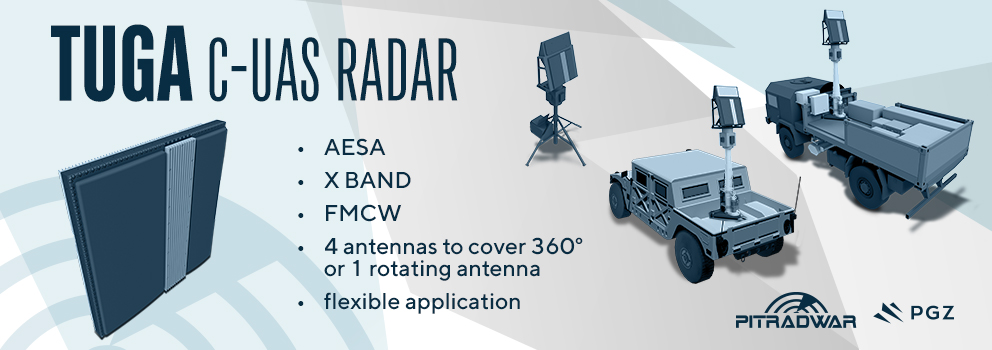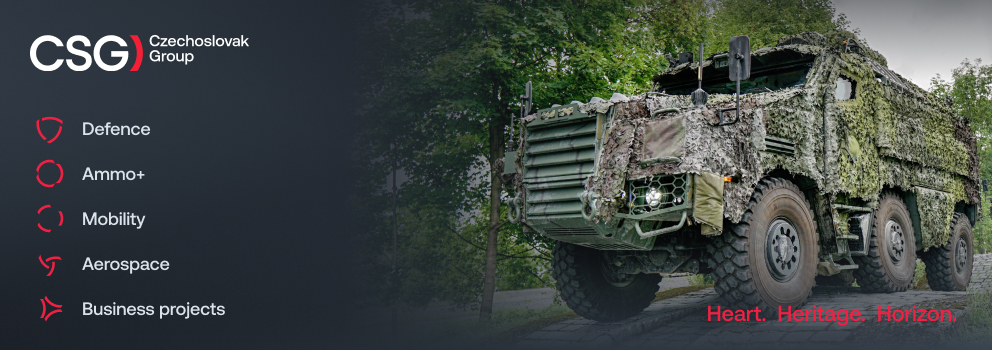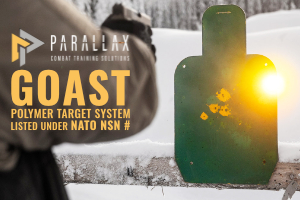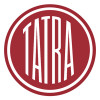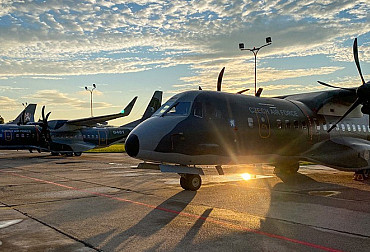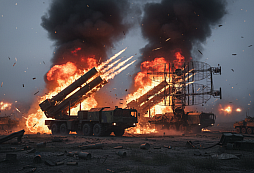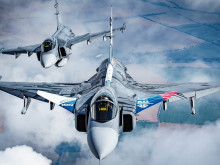The Czech Republic is finalizing an agreement on the continued lease of Gripen aircraft until 2035
The Ministry of Defense recently revealed details of negotiations with Sweden regarding the continued lease of JAS-39 Gripen supersonic aircraft, which are expected to remain in service until 2035. The Czech Republic has recently received a revised offer from Sweden for further leasing after 2027, which better reflects some of our requirements and is largely a compromise between the two sides. If the Ministry of Defense, together with the army, evaluates this offer as acceptable, it will submit a draft agreement to the government, and the final signing could take place before the end of the current government's term. It is therefore very likely that the Swedish Gripen aircraft, which have already flown an impressive 38,000 hours in 20 years of service with the Czech Armed Forces, will continue to serve.
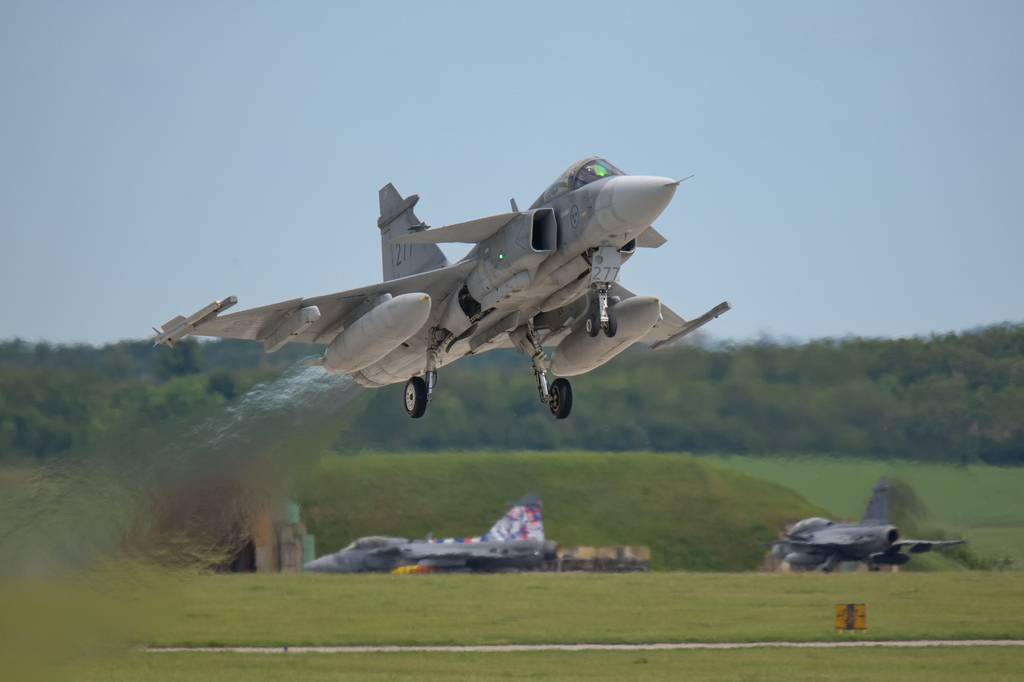
The Czech Republic decided in 2023 to purchase fifth-generation F-35A aircraft, which will become the main and, in the future, the only combat type of the Czech Armed Forces' tactical air force in the following decade. Given that the new aircraft will not arrive in the Czech Republic until the end of 2031 at the earliest, and that both squadrons are not expected to reach full operational capability until 2035, the Ministry of Defense plans to continue operating the JAS-39 platform in the coming years and to operate both combat types in parallel for a certain period of time. From the outset, this has been the preferred option for the Ministry, as it will enable the Czech Republic to continue protecting its airspace while ensuring a smooth transition to the new fifth-generation platform. Continuing to lease the Gripen aircraft is also important for maintaining pilot training, as the core of the flying personnel for the new F-35A will be JAS-39 Gripen fighter pilots.
Fewer aircraft, fewer hours
Ministry representatives had been negotiating with the Swedish side for some time regarding the extension of the Gripen lease and servicing. However, the Swedes' initial offers fell far short of the Czech Ministry of Defense's expectations, as according to unofficial information, the annual lease payment was originally close to three billion crowns. After tough negotiations, both sides reached a compromise that includes a price reduction of around 25% and, on the other hand, optimization of the number of aircraft and flight hours. After 2027, the Czech Air Force will have a total of 12 aircraft at its disposal instead of the current 14, of which 10 will be single-seat JAS-39Cs and two will be two-seat JAS-39Ds. At the same time, there will be a reduction in the total number of flight hours, although the army has not yet specified how significant the decrease will be compared to the current situation. The Commander of the Czech Air Force, Major General Petr Čepelka, said that even with fewer aircraft, the army should be able to fulfill its tasks of protecting the Czech Republic's airspace, but it is clear that the fulfillment of alliance missions abroad will be significantly limited during this period.
As regards the lease price, according to the Swedish offer, the Czech Republic will pay approximately CZK 16.65 billion, including VAT, for the lease of aircraft, servicing, and training between 2027 and 2035, based on the current exchange rate of the Swedish krona. The price offer was mainly influenced by the age of the aircraft, which will be in service for the third decade and are likely to incur higher maintenance costs. In 2027, the Czech Gripens will have an average flight time of 3,000 hours per aircraft, which is not entirely indicative, however, as the number of take-off and landing cycles and actual wear and tear according to the load spectrum, which can be relatively high for Czech aircraft, are much more important. An important part of the offer is also extensive modernization and an increase in the operational capabilities of the aircraft in response to the current situation on the battlefield. The Czech Army would pay CZK 3.9 billion, including VAT, for the modernization according to the Swedish proposal. The aircraft needed to be or will need to be modernized during the current lease period from 2015 to 2027 at a cost of almost CZK 2 billion, including VAT.
Complex negotiations with Sweden
At the same time, it is worth asking whether the Czech Republic, or rather the Ministry of Defense, could have chosen a different strategy for negotiating the lease and achieved a better price or overall terms. The Czech side only began negotiating the lease after signing a contract for American F-35A aircraft, a choice that the Swedes took very badly, to say the least, even though they were partly to blame for their own failure. At the beginning of 2022, the Swedish manufacturer was still “sleeping” like Sleeping Beauty and was absolutely certain that history would repeat itself. This means that the Czech government, or rather the Ministry of Defense, will leave everything to the last minute, when there will be no time for any fundamental changes and, as a result, there will be no other solution than to continue with older or newer generations of Gripen aircraft. The Swedes only made up their minds when it had already been decided at the political and military level that the Czech Republic was moving towards the purchase of fifth-generation American aircraft. If Swedish Saab's advisors for the Czech Republic had read the articles on czechairforce.com in 2021-2022, they might have realized that the replacement of the Gripen was already in the works at that time. While in September 2021, then-Prime Minister Babiš and Defense Minister Metnar were photographed in an F-35 mockup at the traditional NATO Days, in the fall of 2021, the government in the Czech Republic changed completely and Jana Černochová took over the leadership of the Ministry of Defense. who was already known to prefer stronger Euro-Atlantic cooperation and to look primarily to the US and Israel for technology.

After Russia's brutal invasion of Ukraine in February 2022, it became more or less clear that the Czech Republic would replace its existing “Swedish” temporary solution with a more permanent and comprehensive one. At the same time, there were several media-covered exchanges between Jana Černochová and Swedish representatives regarding the Gripen aircraft, and it is certainly true that many of the defense minister's statements were not entirely strategic in view of later developments and could certainly have been handled differently or more diplomatically.
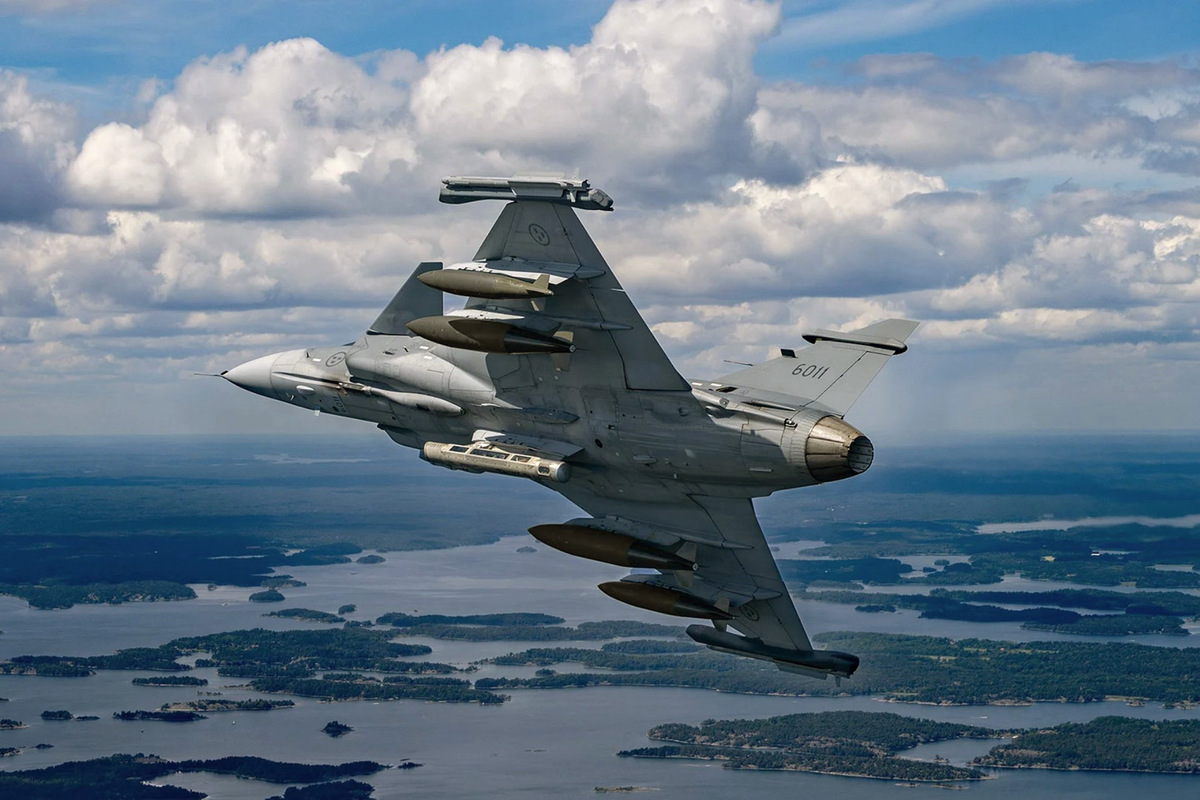
It is commonly known that Jana Černochová, despite her undeniable drive compared to her predecessors, often expresses herself in a highly emotional manner on social media and sometimes fails to fully consider the consequences of her statements. It is therefore clear that regardless of the subsequent decision to purchase fifth-generation F-35A aircraft, which was and still is clearly the right step for the future development of the Czech Air Force, the Czech Republic could have chosen a different negotiation strategy, or perhaps played a tougher game and tried the “Hungarian way” for a certain period. Let us now tell a story that may or may not have happened, or perhaps happened a little differently, or perhaps was completely invented by the author. Let each reader decide for themselves.
The “Hungarian” path
When Hungarian Prime Minister Viktor Orbán announced at the end of February 2024 that he had signed a new defense agreement with Sweden, under which the Hungarian Air Force would acquire, among other things, four additional JAS-39 Gripen aircraft, it came as a considerable surprise to Hungarian military bloggers. In fact, however, the whole story probably began much earlier, and the author himself received the initial information about the expansion of Hungary's Gripen fleet as early as the beginning of 2022. We can only speculate as to why Hungary decided to strengthen its JAS-39 fleet with four additional aircraft at the turn of the second decade of the new millennium, but as always, the explanation may be very simple. In 2018, neighboring Slovakia signed a contract for the delivery of 14 new F-16 Block 70 aircraft, which are the most modern version of the F-16 in Europe and, in terms of capabilities and equipment, significantly surpass the Gripen aircraft used by Hungary. And because there is still some historical animosity between the two countries, action by one side always provokes a reaction from the other.
Given the balance of power, Hungary decided to strengthen its Gripen fleet, modernize it, and purchase new air-to-air weapons to compensate for the superiority of the Block 70s. To increase the number of aircraft, the Hungarians took advantage of a Swedish offer to complete aircraft that were already partially built. As Swedish investigative journalists discovered several years ago, Saab had thirteen brand new Gripen airframes in storage in Linköping, eleven of which were JAS-39C versions and the remaining two were JAS-39D spinners. These were airframes in various stages of completion, which Saab produced in a certain interim period after the end of serial production of the original Gripen C/D, when production of the new generation Gripen E had not yet begun. The reason for producing these airframes was obvious: the Swedish manufacturer did not want to lay off the skilled production line personnel, who would be difficult to find later when production of the new type started. And so began the production of a small series of Gripen C/D aircraft, which Saab was confident could later be sold as newly manufactured aircraft in countries such as Bulgaria, Slovakia, and Croatia. However, these countries ultimately opted for the competing F-16 and French Rafale aircraft, and the manufactured airframes were put into storage, with Sweden attempting to offer them on the international market.
Success apparently came sometime between 2020 and 2021, when Hungary reportedly requested four aircraft to strengthen its fleet and began to take a keen interest in the stored and unfinished JAS-39C/D airframes. Sometime in the second half of 2022, a screenshot of a presentation by the Hungarian Ministry of Defense was circulating on Hungarian discussion forums, showing the future form of the Hungarian armed forces and mentioning for the first time the four new Gripen aircraft that were to be delivered in 2024. However, at the end of 2022, all activity surrounding the four new Hungarian Gripens suddenly ceased, and there was no sign of the entire plan. We can only speculate about the reasons, but on the other hand, it cannot be ignored that at that time, there was an extremely tense political atmosphere between Sweden and Hungary, which could have caused the complete halt of work on the “Hungarian” Gripen aircraft. However, what the Swedes did not anticipate was that they would soon need Hungary's consent to join the Alliance as a result of Russia's invasion of Ukraine in February 2022 and the resulting political decision to bring the hitherto neutral states of Finland and Sweden into NATO structures.
Unsurprisingly, the accession of both Nordic countries was delayed by Erdogan's Turkey, which had its own reasons for doing so. However, in the case of Sweden, it was Hungary that caused the most trouble, dragging the process out for almost two years. During this time, a series of bilateral talks took place between the Swedes and the Hungarians, until in mid-February 2024 Viktor Orbán finally declared that he would approve Sweden's accession to the Alliance. By a series of coincidences that simply happen in our universe, after ratifying Sweden's accession to NATO, Hungary announced the conclusion of a new defense agreement with Sweden, which will see the Gripen fleet strengthened by four aircraft. The agreement also included a ten-year extension of logistics services provided by Sweden and the establishment of cooperation in the field of training. It was also decided that 14 Gripen aircraft leased by the Hungarian Air Force would become Hungarian property in 2026.
What does all this mean for the Czech Republic? Back in mid-2022, when Petr Fiala's government announced its intention to purchase 24 American F-35A fighter jets, it was already clear that these aircraft would not arrive before the end of the Gripen lease, making it necessary to negotiate an extension of the existing contract with Sweden. At the same time, the Czech Republic could have started negotiating in the “Hungarian style” and made Sweden's entry into NATO conditional on the conclusion of a new lease agreement in advance, which would better reflect Czech requirements in terms of price, degree of modernization, and flight hours, or could have made the extension of the lease conditional on a large contract for BVP. Fortunately, the Czech government did not stoop to such “haggling” tactics, which are certainly not the way of long-standing good partners, especially on such a fundamental security issue. And that is right and proper.
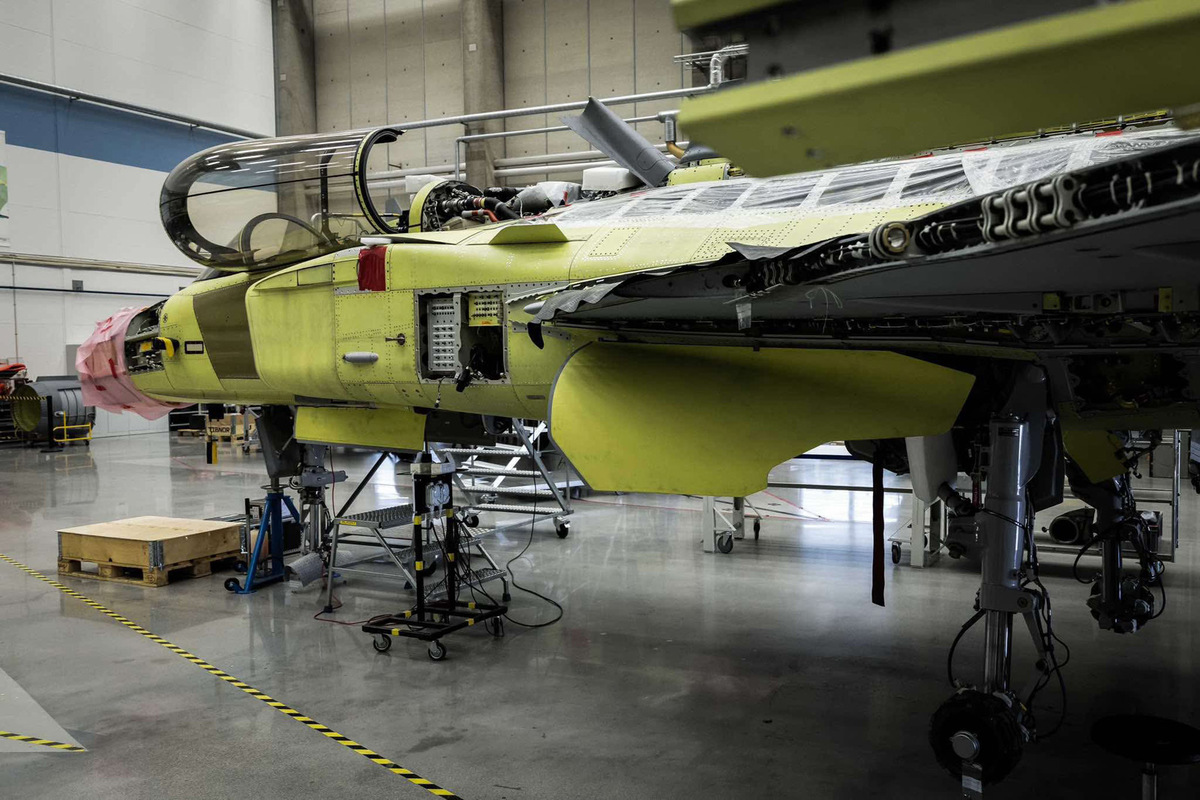
Upgrades and enhancements to operational capabilities continue
Although the Czech Gripen fleet underwent a relatively major upgrade in 2018 in connection with the transition to the new MS20 Block 1.2 software edition, partial upgrades and software upgrades are continuing. Even before the Baltic Air Policing mission in Estonia, the Gripens received an upgrade to MS20 Block 2 in February 2022, which primarily improved accurate positioning thanks to the new H-764 EGI satellite and inertial navigation unit from the American company Honeywell Aerospace, while also activating the so-called navigation landing system, which enables the Gripen to use its on-board systems to guide the pilot to a specific point on the glide path during landing without the need for any ground-based radio-technical support.
This was followed in August 2024 by another update, Block 2.1B, which restored the Link 16 alliance data transfer function with a higher level of security in Block upgrade 2, enabled the operation of military mode 5 of the IFF identification system, and enabled the reception of encrypted signals from the Military GPS navigation system. An update to Block 2.2 is planned before the end of the current lease, which will also include a new SATURN interference-resistant encrypted communication system. As part of an extensive MLU, the manufacturer is also preparing further upgrades that will significantly increase the operational capabilities of the older Gripen C/D generation. As early as 2026, the FMV should begin distributing the Block 3 software edition and, from 2028, the final Block 4 upgrade, which will bring fundamental modernization of the RM12 power unit, radar, avionics, datalink and EWS unit, including the integration of new AIM-120C-8 and KEPD 350 Taurus weapons and the BriteCloud active countermeasure system.
At the same time, regardless of the current state of negotiations between the Czech and Swedish sides, the training of Czech Gripen pilots is not stagnating, but is steadily moving forward in small steps. At the end of April this year, Czech fighter pilots began training in night refueling using the AAR method, becoming the first users of the JAS-39 platform to embark on this extremely complex process at the operational level. The nighttime AAR procedure using the “Probe and Drogue” method is one of the most demanding tasks, regularly practiced only by the most advanced air forces. For this reason, the Czech Gripens underwent a minor upgrade relatively recently, during which new lighting was installed on the telescopic extension to facilitate the entire operation.
A further increase in the operational capabilities of the Czech Gripen aircraft should take place around 2028, when new AIM-120C-8 missiles arrive in the Czech Republic. Although their acquisition is directly linked to the purchase of F-35A aircraft, these missiles will also be available to Gripen pilots after the planned upgrade. The Swedish aircraft should also be equipped with NATO Standard pylons for suspension points 3 and 5, which will allow them to carry not only anti-ground ammunition, but also new drop tanks with Alliance mounts, which the Czech Armed Forces also want to order due to their chronic shortage. However, it remains to be seen whether all the planned intentions will be fulfilled.
In conclusion, it can be said that although the JAS-39 aircraft have been in service with the Czech Air Force for two decades and the army has never acquired all the possible equipment or capabilities for them, thanks to regular upgrades, they are still a relevant combat platform in the Central European region, and with the help of further planned modernizations, they will hopefully remain so in the third decade of their service.
